You’ve just purchased some proxy IPs from a good proxy provider to help you scrape websites, access content that isn’t available in your area, or whatever else you need.
However, you want to ensure the proxy works for your preferred location at an adequate speed and without downtime.
To avoid being let down later, you must test your proxy servers before using them. You will learn how to test your proxy in this article.
Let’s get started.
Table of Contents
When testing proxies, what are the three primary factors to consider?
The location, speed, and uptime of your proxy are the three most important factors to consider when testing them.
📍 Location
You must use a UK proxy to get to website content only available in the UK. What would happen if you used a proxy from the US or Canada?
Then you simply won’t be able to get to the UK content. So it’s clear you need to use a proxy server in the UK. The same is true for every other place.
🚀 Speed
To work with proxies, you need to be very quick. When you scrape a lot of data from a website or buy something online, like a sneaker bot, it might be annoying if the proxies are slow.
Proxy servers that are shared or that anyone can use are very inefficient. This is because a lot of people use them at the same time. You’d waste more time using these proxies to do things that would take less time if you did them directly.
💨 Uptime
It doesn’t help to have a proxy that works well in the location you want and quickly enough if it goes down often. For example, if your proxy goes down while web scraping, you will probably get frustrated.
Most free proxy servers tend to stop working. What works now might not work in the future. Free proxies are acceptable if all you need to do is hide your identity while surfing the web. But you should never use them for more complicated tasks like web scraping.
Even though the providers of paid proxies say they are up and running 99.9% of the time, you should test how long they have been up and running.
You can use a TCP monitor to determine how long the proxies have been up. You can also use a Windows Service Check to ensure the proxy service is running.
How to test the location using IP Checkers?
Checking your IP address is one of the easiest ways to find out where your proxies are. It would show the IP address as well as the location.
Even though there are many websites where you can check your IP address, we will use whatismyipaddress.com in this case.
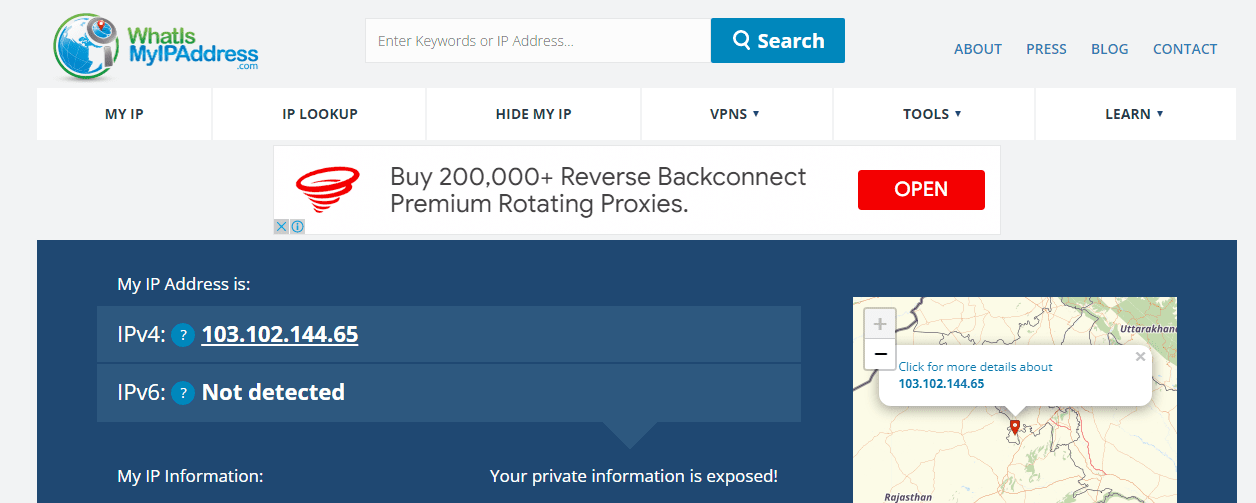
It would give out your IP address.
But it won’t be able to tell if you’re using a proxy or not.
Because of this, whatismyproxy.com would be a better choice. When you click on the link, it will tell you right away if you are using a proxy or not.
Besides displaying your IP address and location, it would also display the HTTP headers of your user agent.
You can set up your proxy in Google Chrome and then test where it is. Then, you can check your IP location by using whatismyproxy.com or whatismyipaddress.com.
How can an IP database be used to test your proxies?
This section of the website focuses on IP address checkers, IP location checkers, HTTP information, and tools to determine if you are hiding behind a proxy.
That’s all there is to it since they don’t have much else to offer. In the next section, you’ll find out about IP Databases, a sophisticated tool that looks at more complicated details.
IP Databases
Some websites use third-party IP databases to find out where in the world their customers and visitors are from and if they are real people.
IP Databases have to figure out the status and type of use of an IP address to get this kind of information. IP databases have their ways of finding out this kind of information.
But IP databases with more features cost a lot of money. There is a well-known IP database called IP2location.com that provides 50 IP addresses for free. As soon as you sign up, you will be able to access 200 IP addresses.
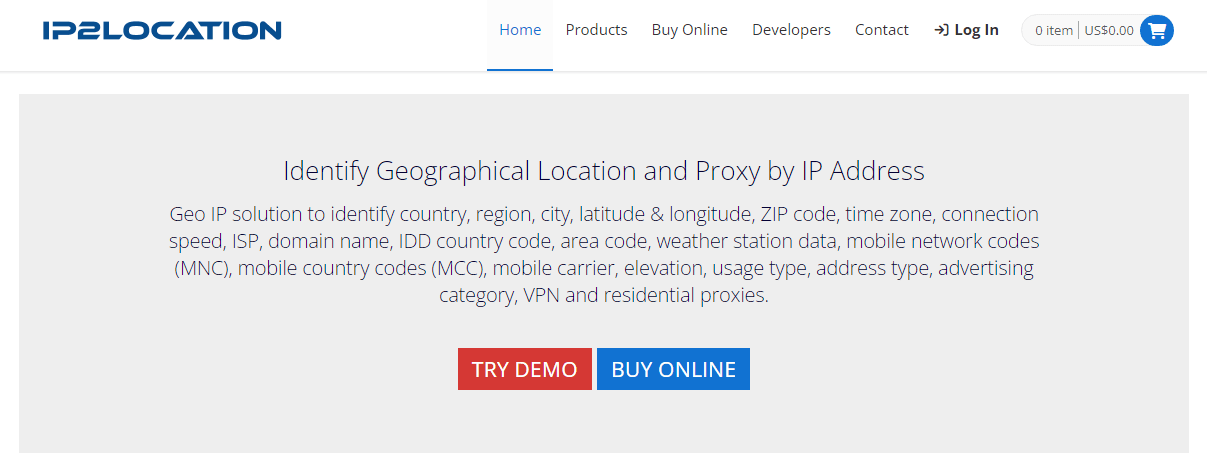
Following is the way how you can use it:
- If you’re using a free proxy, as one of the articles in the links above says, you need to set up a proxy. But since you already know that free or public proxies are not safer, I strongly suggest setting up your browser to use back connect or a pool of residential proxies.
- Then go to the URL ip2location.com, which will tell you your current IP address, as shown in the screenshot below.
- Since you will be using proxy servers that change, you will have to refresh the page.
Limitations
- Payment is required for full access
- Proxy speed is not shown
- You will not be able to figure out whether the proxy works with the websites you need access to.
What it shows:
I will explain the terms you hear the least often, while others are self-explanatory, such as IP address, country, region, and city.
- Anonymous proxy: determines if your IP address is hidden by the proxy.
- Proxy ASN: Identifies the company that issued the IP address
- Usage Type: This shows where the proxy came from, such as a residential proxy, a data center proxy, or a mobile proxy.
If this database saw that you were trying to use a home proxy as a datacenter proxy, then the websites that use this database will see the same thing.
Because of this, target websites are likely to block you. It happens because websites check out who visits them.
Further tools for testing your proxies
1. FOGLDN Proxy Tester
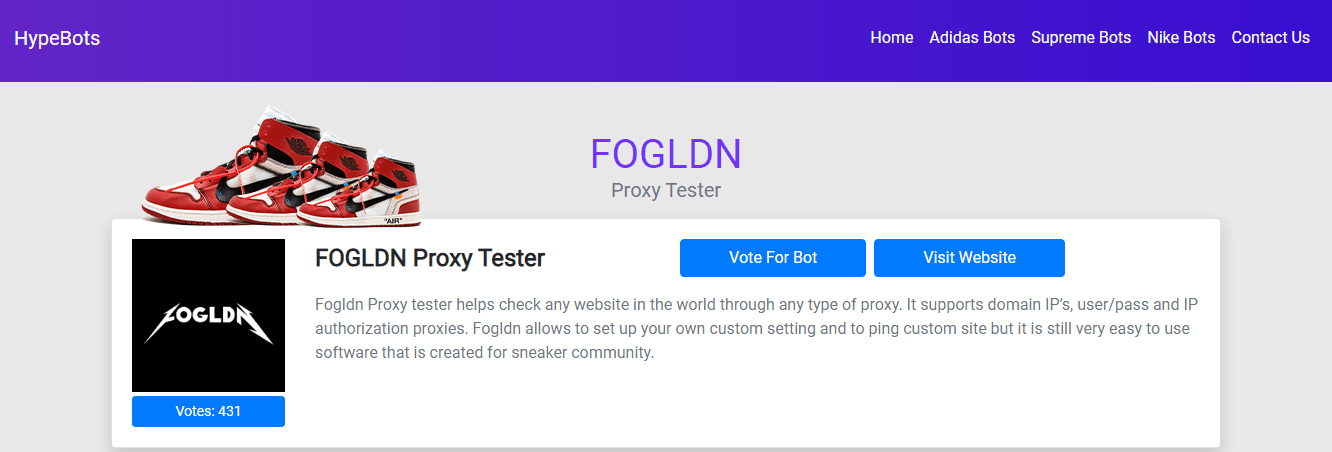
I’ve already talked about how important it is to test the speed of proxies. FOGLDN Proxy Tester is an advanced speed testing tool that lets you send direct ping times to any website worldwide. Sneaker proxies require speed to work properly, and this tool is perfect for testing them. It is compatible with both Windows and Mac.
You can check the latency of the proxy by looking at how long it takes to connect. A rotating proxy can be tested with this tool, as can any proxy.
Follow these steps to use this tool:
- A download link is available on its website.
- Afterward, you need to add your proxy list to it once it is set up on your system (Windows or Mac). If you use rotating proxy addresses, you can add them to it.
- The next step is to add the URL you’ll be testing.
- The results will look like the below figure once you select “TEST PROXIES.”.
Limitations
- There is no information revealed about the proxy’s location, type, or anonymity in the test.
- There is no indication of why a test fails.
- Requests can’t be made as quickly or as many as you want.
2. NMap
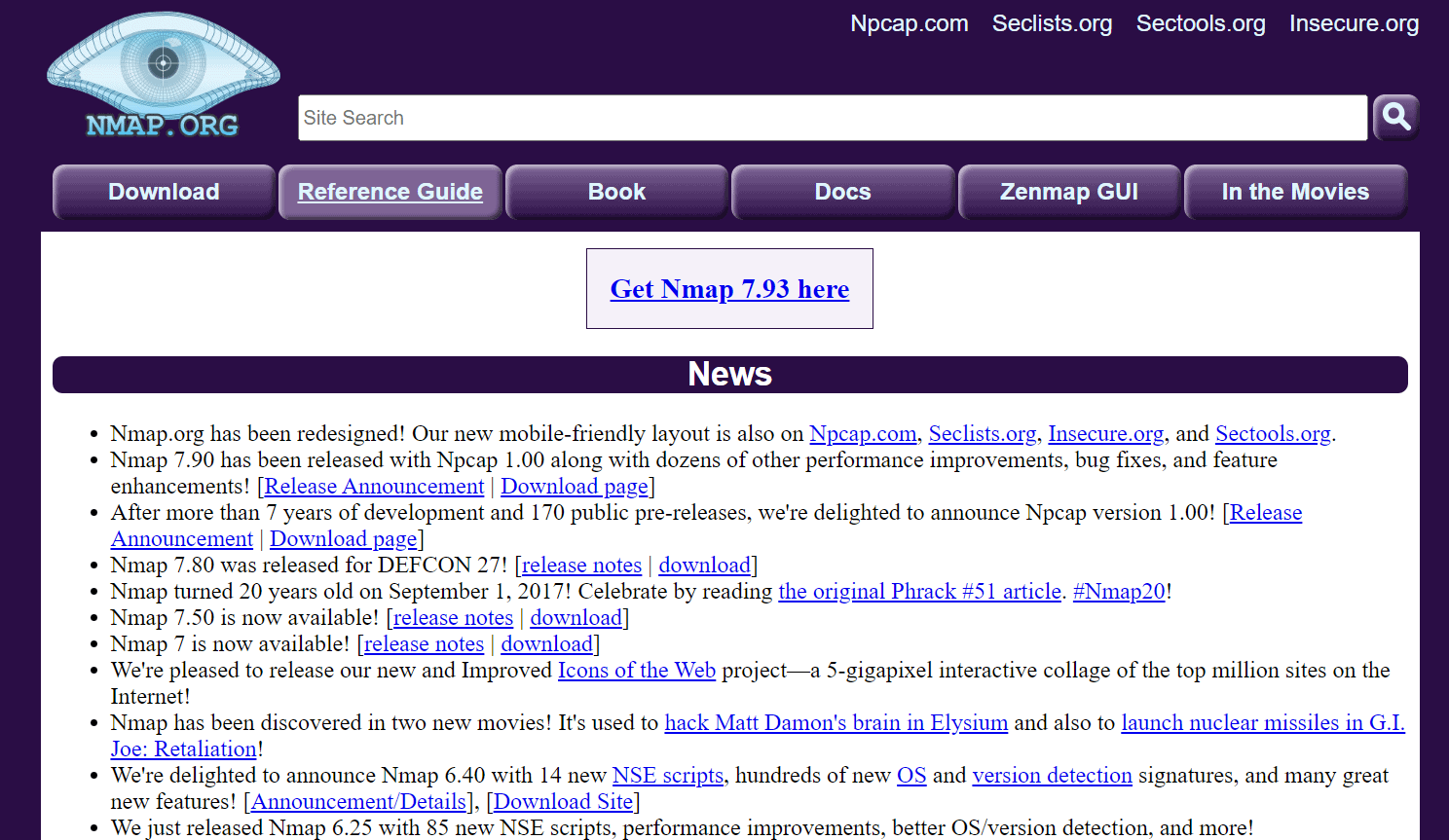
Network Mapper, or NMap, is a free, open-source network scanner that finds hosts and services by sending packets and looking at how they respond. When testing proxies, NMap needs the IP packets or addresses of the proxies and information about the hosting provider.
If you are not very technical, you can use NMap to find hosts, scan ports, and find out what operating system is being used. You can get more out of this tool, though, if you know more about how it works.
3. Angry IP Scanner

Angry IP Scanner is another free, open-source scanner you can use to test proxy servers. It works on several platforms, including Windows, Linux, and Mac.
It’s another way to test how fast your proxies are because it quickly pings all the IP addresses in a range. It can also scan the ports and find the MAC addresses of proxy servers. It can also check how long your proxies are up.
One big advantage over other tools is that the results can be exported in different formats. The command-line interface of Angry IP Scanner makes it easier to use. You can make it do more by using data fetchers.
4. Hidemy.name
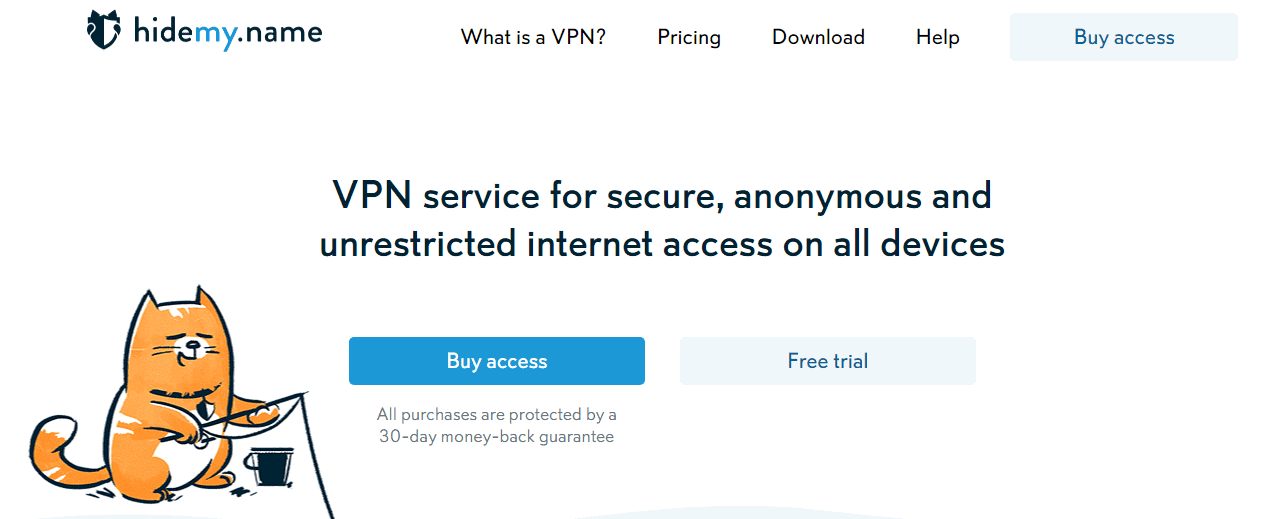
This proxy checker is more advanced but still accessible. It can find out the proxy’s type, exact location, speed, and level of anonymity.
Hidemy.name shows a proxy list that it has put together from a wide range of websites and databases, both public and private.
One of the best things about this Hidemy.name is that it can tell how anonymous your real IP address is. For example, it can tell if your IP address is hidden from the web server you’re going to or if it can tell if you’re hiding behind a proxy.
Hidemy.name’s proxy list includes the following levels of anonymity:
No anonymity: A proxy server masks your IP address, so the destination website knows you’re connecting.
Low anonymity: Your IP address is unknown to the destination site since you hide behind a proxy.
Average anonymity: The website you want to visit knows you are hiding behind a proxy server. But Hidmy.name tricks the website you want to visit into thinking it knows your real IP address. The IP address that is shown is not accurate, though.
High anonymity: You don’t have to reveal your real IP address to the target website because you’re hiding behind a proxy.
The proxies can also be sorted by protocol type on Hidemy.name. The HTTP protocol, HTTPS protocol, or SOC protocol, for example.
5. Proxy Verifier

Proxy verifier is a product from Yahoo that checks HTTP-based proxies. It is an open-source product that can be used in both directions.
This means that it pretends to be both the server and the client to find traffic going to and from the proxy. You could use this tool to test proxies against certain criteria.
Proxy Verifier is easy to use because it has a dashboard that is easy to understand. This proxy tester lets you do configuration transactions once or many times, depending on how many times you set.
Test your proxy servers with these additional tips
Keep these facts in mind before purchasing any tool:
Make sure your computer is secure
Make sure you have the latest anti-virus software to keep hackers from doing bad things to your computer. Even if you have anti-virus software installed, your system could still be vulnerable to security risks in some situations.
Hackers these days are smart and always one step ahead of you. You could use paid proxies to keep your computer safe instead of installing anti-virus software.
Make sure no sensitive information is leaked
When you use free proxies, there is a good chance that they will leak sensitive information, like your IP address and where you are. So, if you want to hide your IP for anything other than browsing, you should always use a paid proxy.
Some of the hackers might be running free proxies as well. So if you use them, your personal information could be stolen, and your system could be attacked by bad people.
Find reliable proxy providers and purchase proxies from them
Since most free proxies cannot be trusted, it is highly recommended that you use paid proxies. However, the proxy provider must be reliable. My recommended proxy provider is Oxylabs.
Oxylabs is the largest proxy pool provider with ethically sourced proxies. It has 100M + residential proxies and 2M + datacenter proxies. Oxylabs provides custom-built scraper APIs, saving you time in developing scraping infrastructure.
Their dedicated support managers are there to help you 24/7 at any time of the day or night.
FAQs
Whether you go for a free proxy or a paid proxy, you should always look out for three important factors. These are speed, uptime, and location. To check the location and whether your IP is a proxy or not, you can go to whatismyproxy.com and find out your proxy address.
There are numerous tools available in the market to test out proxies of all kinds. FOGLDN, Nmap, and Angry IP scanner are some of the best proxy testers out there in the market. With proxy testers, you can check the latency, speed, and other important factors of your proxy.
Conclusion
After reading this article, you may now have a good idea of the different tools that can be used to test proxies. It’s important to test your proxy to ensure it works as expected based on where it’s located, how fast it is, and, most importantly, how often it’s online.
After learning about the different tools you can use to test proxies, we hope you will choose the best tool for your needs.
